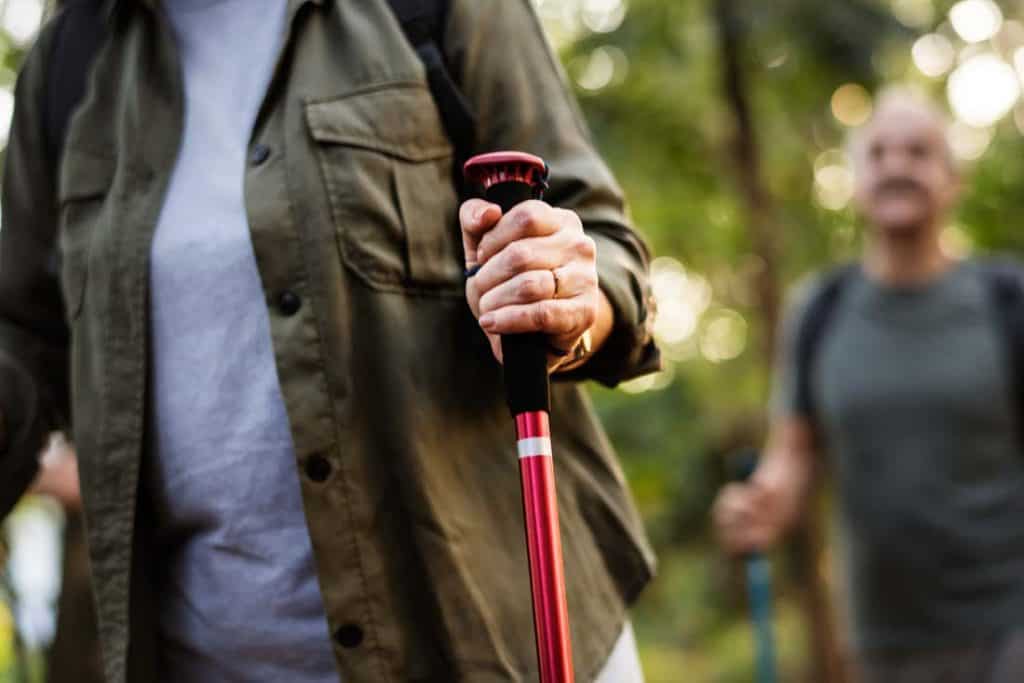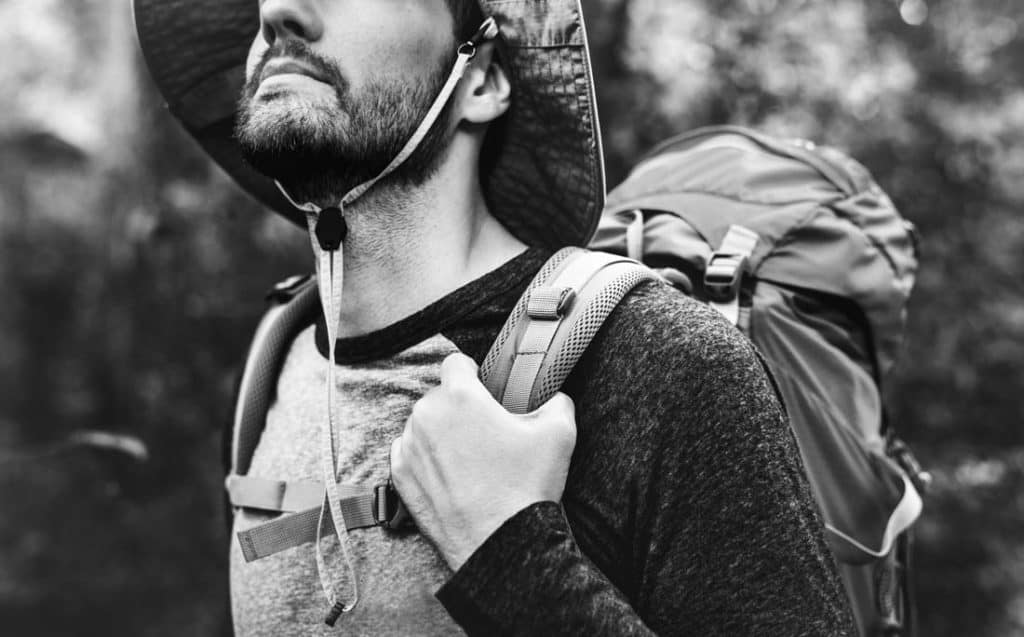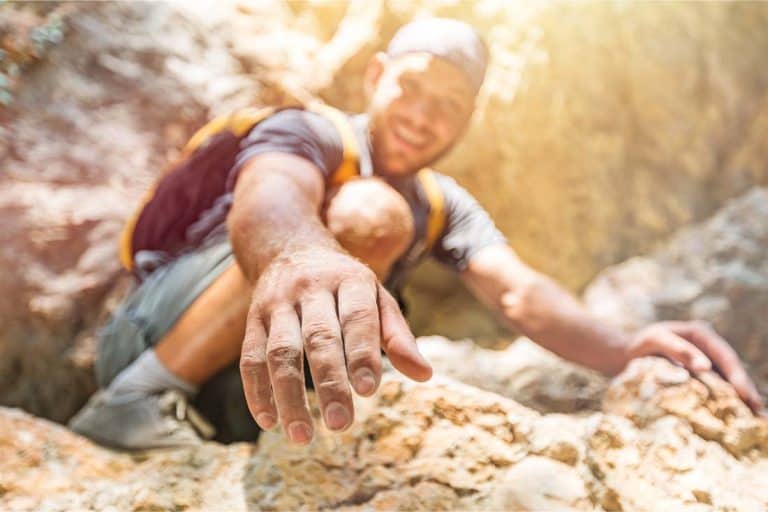The exact question of why hands swell when hiking puzzled our brains when we started hiking. Back then, we worried a bit, thinking about what was happening with our bodies, whether hiking caused us any harm, or even if we had any health issues.
Many of you asked yourselves the same thing, one way or another, right? Isn’t it enough that we need to recover with after-hiking exercises after long hiking hours?
There are a few reasons why your hands swell when hiking. Some relate to hand positioning and others to possible medical conditions. Here we present the various cases that may cause hand swelling when you walk, and we will focus on ways to deal with this during and after hiking.
Keep in mind that you need to consult with your doctor if you have a medical condition.
Why Do Your Hands Swell When Hiking?
Several non-medical reasons can relate to your hands getting swell after hiking (usually for many hours).
Under normal circumstances, there is a simple explanation for swelling hands when hiking, and physics provides it. It is the pendulum effect. Your hands, as you walk, move back and forth, resembling the movement of a pendulum. That semi-centrifugal movement pushes blood to the edges, and it happens through simple gravity and momentum. So, that swelling may well be from blood pooling in your hands. This happens slowly, thus swelling when walking is not an immediate reaction.
Your hands do that short-range vertical movement, especially when you don’t use a trekking pole. Do that for 4-6 hours hiking, and blood sums up.
Another reason for hand swelling when walking may be the vascular system and how it works during hiking. The vascular system can contribute to the swelling of your hands. As our core muscles heat up, the vascular system tries to cool the body down. Thus, it releases more fluid to our fingers, feet, and hands. As the blood reaches the skin to cool us down, fluids are leaking from the vessels for perspiration, and that causes the swelling.
What also happens during hiking is that as the blood concentrates on the active parts of your body (heart, feet, lungs), the blood vessels on your hands expand to accommodate more. That also causes hand swelling.
Other times hand swelling in hiking may have its roots on if something constantly reduces your blood circulation (i.e., the backpack shoulder straps) or if you clench too tight on your trekking poles.
The exact conditions and results may differ depending on if the weather is cold or hot.
How To Prevent Swollen Hands When You Walk?
Fortunately, you can do a series of things to prevent hand swelling in hiking or ease and even reverse the swelling when you walk. Keep in mind that the swelling unrelated to medical conditions will disappear after a few hours when you end your hiking trip. Here are the ways to reduce the swelling during your hiking.
Adjust your Backpack Straps
Swelling, while it shows in the hands, it may be caused by the wrong way you wear your backpack. Our article for the best hiking daypacks and this for hiking for beginners has all the information you need to choose and wear the backpack right.
In short, any backpack should be adjusted to sit on your hips with almost zero to your shoulders. The shoulder straps must be adjusted (depending on the weight) to close your torso without creating a “pull” feeling. Your shoulders should not feel like carrying weight. If you feel like that, all that pressure, no matter whether you realize it fast or not, will gradually contribute to the swelling of the hands when you walk.
Use Trekking Poles

Keeping your hands down as you walk is by itself part of the problem. To avoid that, engage them in your movement using trekking poles.
These lift your palms higher (90 degrees to the ground) and help. But make a mental note not to have a tight grip on the pole. Many do, without realizing it, and that strains the palm, your fingers, and your arm.
Compression Gloves
An additional gear you can have is gloves that also ease muscle tension. They are suitable for medical conditions (i.el. arthritis), for sports, and of course for outdoors.
An excellent set of such gloves is this one (for men and women) that are fingerless and moisture-wicking.
Stretch and move Your Hands
Another way to reduce swelling along your hiking is to do some exercise when you take breaks or as you walk. These exercises push back the concentrated fluids and provide relief. Here they are.
- Exercise 1: Put down your trekking poles and raise your arms above your head. In case your backpack straps don’t allow that and you don’t want to unload it, then lift your elbows above the level of your heart.
- Exercise 2: Simply clench and wiggle and fingers. That creates a pumping effect that helps.
- Touch each finger and shake it a little bit. Then slip your hands towards the base of each finger, in the same way you would wear a ring.
Bend Your Elbows

A trick we found that reduces swelling in the following. As mentioned in the previous section, lift your elbows above the level of your heart and place your thumbs under the shoulder straps at your chest level. Just walk like that when you move on the trail, without, of course, sacrificing that for balance.
That is what soldiers used to do when they were on a long march. Placing the hand under the rifle strap also helped them reduce the rifle weight strain.
Isotonics and Hydration
Make sure you are hydrated well. If the route comes with lots of uphills or under the scorching sun with lots of sweating, drink water before you feel thirsty. Taking a sip every 20-30 minutes works well. You can also use isotonic drinks that replace electrolytes.
You can add electrolyte tablets to a bottle of water if you like. In most cases, the “good old water” is sufficient.
Make sure not to drink excessively as that may cause other issues.
Remove Rings and Bracelets
Remove objects that enhance the swelling problem if your hands swell just a little. Rings will make things worse to painful, and tight bracelets will do the same.
Retrograde Massage

This is a gentle type of massage that helps with reducing swelling. You need to take a small break to apply this kind of massage. You can read more here, and the key steps are the following.
- Place your swelling hand above heart level.
- Use a non-perfumed cream on the same hand.
- Starting at the tips of your fingers, massage towards your knuckles and onto your wrist, massaging all areas of your fingers and hand.
- Continue massaging upwards onto your forearm.
- Repeat as many times as needed to each hand.
Other Factors That Play A Role In Hand Swelling
The hand’s movement and position cause hand swelling when hiking. On top of them, other factors can either cause or enhance the problem. These factors relate to both external and internal conditions.
Heat and Humidity
On a hot day, hands get warmer faster. Blood flow increases and heat build-up. Our hands sweat, and our bodies try to cool down using that regulatory mechanism.
You may have noticed that there are such days where everything feels sticky or like your skin is “sealed.” But on some humid days, that process is not working well. Fluids under the skin can’t evaporate, and thus swelling happens.
Cold
Cold per see, is not causing swelling as it helps to contract everything on our body. Many make the mistake of warming their hands fast after they get cold. That sudden “shock” of temperature change allows warm blood and fluids to circulate, and hands swell quickly when you walk.
When you get your hands warm, do it slowly and gradually. Do not place them on a hot or very close surface or another medium that produces heat (i.e., fireplace, radiator, hot water, etc.).
Hyponatremia And Electrolyte Imbalance
If you drink too much water, then sodium levels will drop. That is called hyponatremia which means “under the normal sodium in your blood.”
The excess water will cause cells to expand, aka swelling. However, hyponatremia causes much more than simple swelling (causes nausea, headache, confusion, and fatigue) and is a severe thing that you need to deal with.
High Altitude
High altitude can cause swelling not only during hiking. That swelling appears on your arms, legs, and your face. It is called pulmonary edema and results from the difference in pressure in and out of your lungs.
That difference causes water pooling in your lungs, making it difficult to breathe.
Hands Swell While Hiking – Is It Safe for Your Health?
It is a nuisance to have swollen hands while you hike. We recognize that. Apart from checking with your doctor for causes other than simply hand placement, do remember that swelling will go away fast after you stop and rest.
However, excessive hand swelling (and depending on the hand’s structure of each one of us) may lead to less gripping capability if you need to climb on something or grab from something.
You may need to hold tight from a rope with swollen hands that may not be entirely possible. You may need to keep someone from falling.
It is best to do some exercises and hiking and reduce that swelling with that in mind. As the proverb says: better safe than sorry.
Conclusion
Swelling hands -with the absence of a medical condition- is something that happens to all of us who love hiking and spend hours on the trails.
The advice above combines “outdoors wisdom” and standard biology that outdoorsmen who dealt with the famous “sausage fingers.”
If this article helps you a lot with your swelling hands while hiking, consider the related post below;
